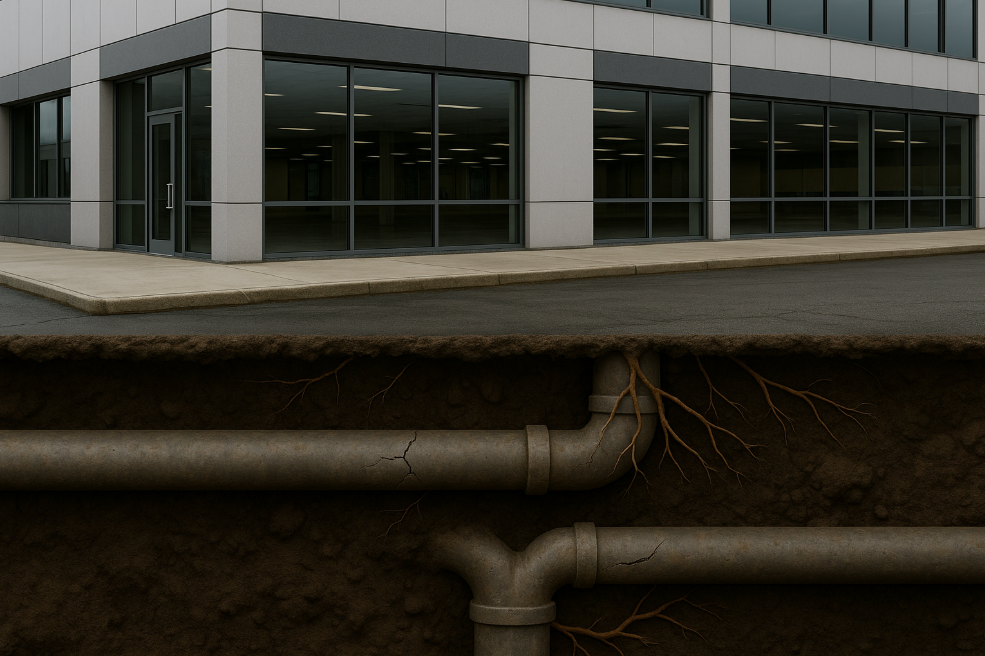When managing commercial facilities, there’s plenty that can disrupt your day-to-day operations, but few issues are as sneaky (or costly) as neglected drainage pipes. Hidden behind walls, floors, and ceilings, your drainage system often doesn’t get attention until it’s too late. And by then, you’re not just dealing with water, you’re dealing with operational downtime, safety risks, and a hefty repair bill.
The Risks of Ignoring Aging or Deteriorating Pipes
- Unplanned Shutdowns:
Clogged, cracked, or corroded pipes can cause major system backups, leading to flooding, contamination, or the need to halt operations entirely. If your facility depends on a clean and functional environment, like in healthcare, manufacturing, or food processing, even a minor drainage issue can grind everything to a stop. - Safety Hazards:
Leaks and overflows don’t just damage equipment, they create slip hazards, mold issues, and potential exposure to harmful contaminants. This not only puts your staff at risk but could also lead to OSHA violations or insurance claims. - Escalating Repair Costs:
What starts as a slow drain or minor leak can quickly evolve into a full-blown emergency repair. Emergency crews, water damage restoration, and replacement of damaged infrastructure often cost exponentially more than preventive maintenance would have.
Warning Signs to Watch For
Not sure if your system is at risk? Here are a few early red flags:
- Frequent slow drains or recurring clogs
- Unusual odors coming from floor drains or pipe chases
- Wet spots, staining, or bubbling in floors or walls
- Visible corrosion on exposed piping
- Increased pest activity in utility areas
How to Stay Ahead of Pipe Problems
- Schedule Regular Inspections:
Annual or bi-annual pipe inspections, especially with video camera technology, can help you identify hidden corrosion, scaling, and blockages before they become critical. - Implement a Pipe Rehabilitation Plan:
For aging infrastructure, trenchless pipe rehab techniques (like cured-in-place pipe (CIPP) lining or pipe bursting) can restore functionality without major disruption to your operations. - Keep Maintenance Records:
Track your system’s performance over time. A history of frequent backups or leaks in the same location is often a sign of a larger issue. - Work with a Specialist:
A qualified commercial pipe rehabilitation team can assess your drainage system and recommend targeted solutions that keep your facility compliant, efficient, and protected.
Don’t Wait for the Emergency
Pipe issues don’t fix themselves, and waiting until something breaks can cost you more than just time and money. By staying proactive, you can keep your facility safe, efficient, and flowing as it should.
Need help assessing your drainage system?
Our team specializes in commercial pipe rehabilitation and can help you develop a proactive plan tailored to your facility’s needs. Let’s talk about how we can keep your operations moving, without the mess.
For assistance, visit ColonialWebb.com
Next learn about: Understanding the ROI of Pipe Rehabilitation: Investing Wisely in Your Infrastructure



